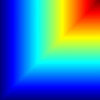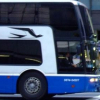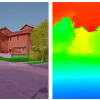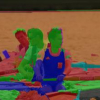CVPR
2010
IEEE
14 years 8 months ago
2010
IEEE
Maji and Berg [13] have recently introduced an explicit feature map approximating the intersection kernel. This enables efficient learning methods for linear kernels to be applied...
CVPR
2010
IEEE
14 years 8 months ago
2010
IEEE
We present two novel methods to automatically learn spatio-temporal dependencies of moving agents in complex dynamic scenes. They allow to discover temporal rules, such as the rig...
CVPR
2010
IEEE
14 years 8 months ago
2010
IEEE
Objects are usually embedded into context. Visual context has been successfully used in object detection tasks, however, it is often ignored in object tracking. We propose a metho...
CVPR
2010
IEEE
14 years 8 months ago
2010
IEEE
Several object categorization algorithms use kernel methods over multiple cues, as they offer a principled approach to combine multiple cues, and to obtain state-of-theart perform...
CVPR
2010
IEEE
14 years 8 months ago
2010
IEEE
Automatic recovery of 3D human pose from monocular image sequences is a challenging and important research topic with numerous applications. Although current methods are able to r...
CVPR
2010
IEEE
14 years 8 months ago
2010
IEEE
Self-similarity is an attractive image property which has recently found its way into object recognition in the form of local self-similarity descriptors [5, 6, 14, 18, 23, 27] In...
CVPR
2010
IEEE
14 years 8 months ago
2010
IEEE
Markov random fields (MRFs) are popular and generic probabilistic models of prior knowledge in low-level vision. Yet their generative properties are rarely examined, while applica...
CVPR
2010
IEEE
14 years 8 months ago
2010
IEEE
We consider the problem of estimating the depth of each pixel in a scene from a single monocular image. Unlike traditional approaches [18, 19], which attempt to map from appearanc...
CVPR
2010
IEEE
14 years 8 months ago
2010
IEEE
We are interested in identifying the material category, e.g. glass, metal, fabric, plastic or wood, from a single image of a surface. Unlike other visual recognition tasks in comp...
CVPR
2010
IEEE
14 years 8 months ago
2010
IEEE
We propose a semi-supervised model which segments and annotates images using very few labeled images and a large unaligned text corpus to relate image regions to text labels. Give...




